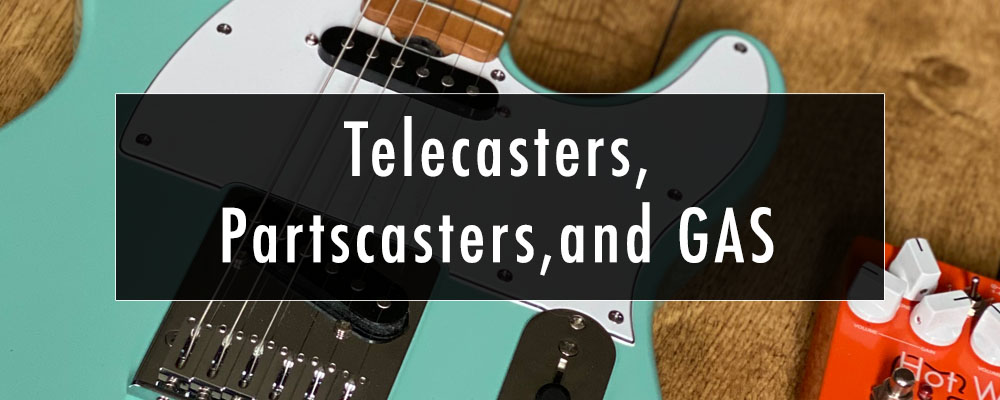
The news this week of the new Fender Brent Mason models (which have been in the pipeline for some 3 odd years I am led to believe…) sent the online gear community totally aflutter with frenzied chat for many good reasons. The top end model, the masterbuilt one, shows an incredible attention to detail, and a price to match, but it was the “regular” model that really caught my eyes. That’s a lot of guitar for the price, and unique looking with it. The primer grey color looks amazing, the extra pickup and blend knob sound ridiculously good from the demos I’ve heard. The factory fitted Glaser bender? Oh my. It’s fair to say Brian’s reaction this week, given he is “somewhat of a fan” of Brent – having named his son after him and of course releasing the Brent Mason Hot Wired pedal – was on the giddy exuberant side to put it incredibly mildly. It gets a bit of a mention in this week’s Chasing Tone Podcast.
So it seemed an appropriate time to talk about my own quest for the perfect Telecaster – and the unexpected grail at the end. I’ve been playing guitar “casually” since the age of about 15. I had been given a second hand Marlin Sidewinder (Strat clone – very popular in the 1980s in the UK) for my 15th Birthday and took a dozen or so lessons off a talented kid in my class. I learned some chords, some transposed intros, 2 scales…I could fumble through a few songs and set up a band with some mates. This was the start of a lifelong gear obsession. I bought a used Strat in Olympic white, which was some form of hybrid American / Japanese iirc, with a Kahler Floyd Rose style trem in 1991. I destroyed that trem unit completely by over tightening the fine tune adjusters (seemed to me made of a metal softer than cheese…) and it was not easy to replace a Kahler equipped strat pre-internet.
These guitars 100% set me off as a “Fender guy” in terms of ergonomics for sure moving forward, even if looks-wise I had other ideas, the instrument shape you play as a child definitely feels most comfortable as an adult. Fast Forward 7-8 (very) odd years of never playing guitar and I found myself falling in love with guitars again, suffering GAS and like a kid in a sweetshop I decided to collect “one of every kind”. I already had a 2000 Les Paul Standard that I picked up in Toronto, that was soon joined by an SG, a Strat and then my first Telecaster.
And now to the relative present day. Hanging around online with all the fine Wampler Tone Group folk had made me GAS hard for another telecaster, and my local shop had a nice MiM Standard Telecaster in Lake Placid blue that looked the part. I suffer from a little bit of stage fright in guitar shops – I’m not afraid to admit it. I get in there and think everyone is listening to my half baked riffs and poor choices of chords and secretly judging me. It’s significantly better now they all know me but this was then. I played it for about 4-5 minutes, it seemed ok, it was my birthday so I was looking for an impulse buy, so i got it. After a few months of playing at home and at lessons I started to hate the neck. It was so glassy on the fretboard with lots of gloss lacquer it just felt weird. Bends would stick. The sound was a bit “dull” to my ears. It just did not hit the spot. This inevitably led to a rise in GAS once again.
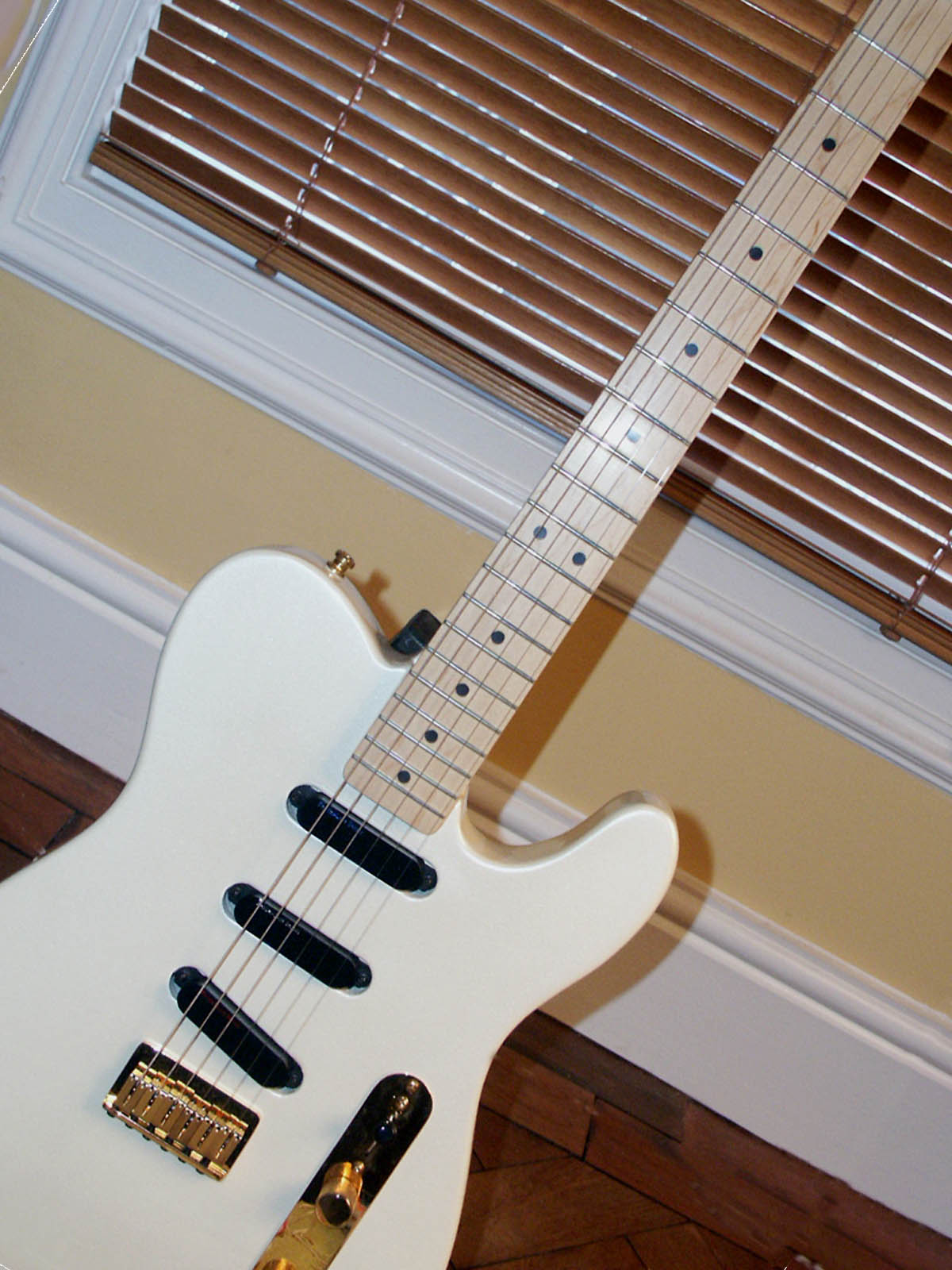
In 2018 I spent some time out in New Jersey with my gear nut cousin Paul and he took me to see his friend Richie Baxt. Richie has a famous “store” in East 11th Street NYC, where he has been repairing and building guitars since around 1978. I use the term “store” advisedly as Richie’s shop is actually a small one bed apartment that is a literal “Aladdin’s cave” of guitars and guitar parts. Every inch of every wall either tells a story or stores some ephemera – it’s a gear nut’s dream.
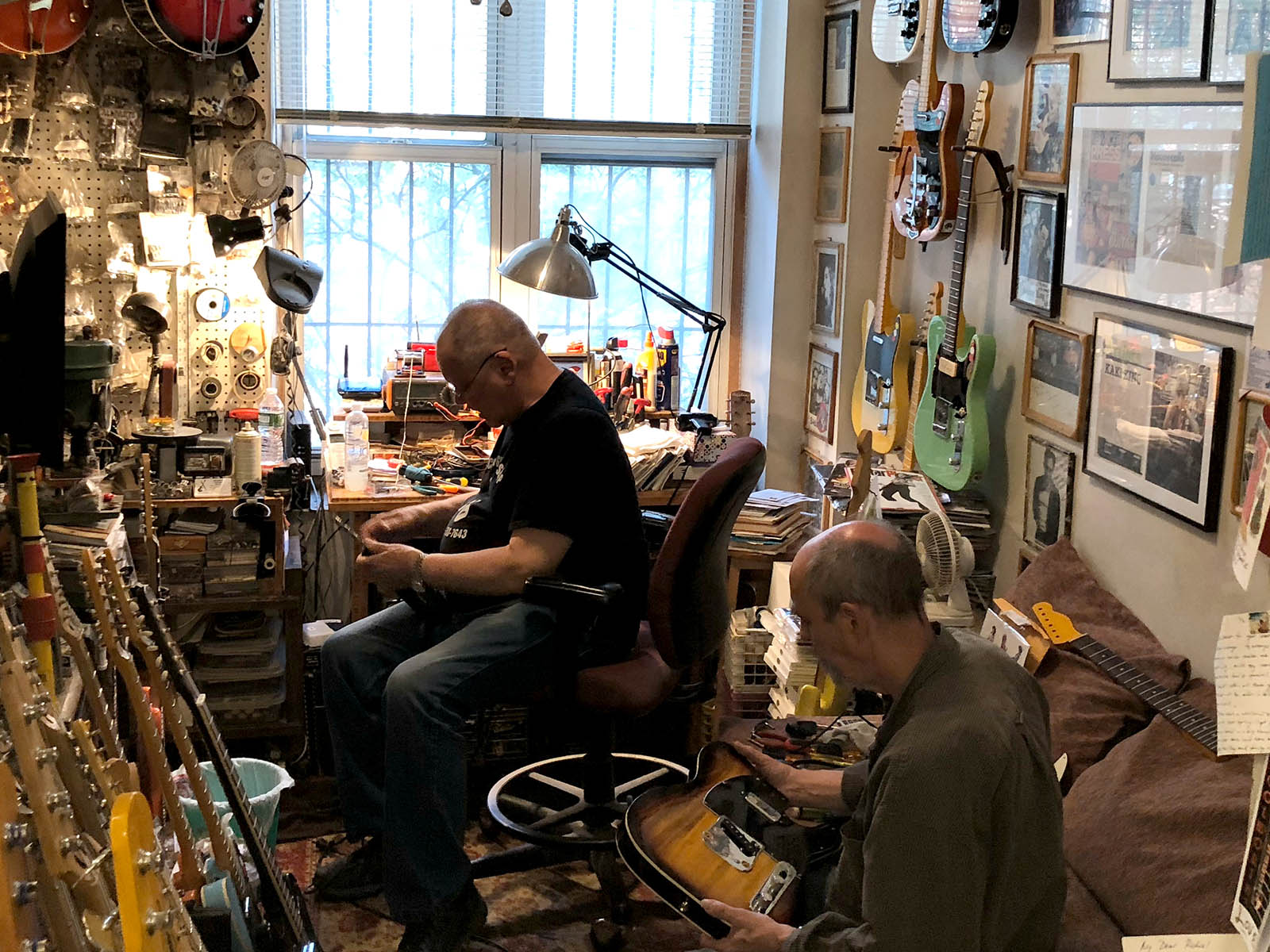
Richie is a real figure in NYC music folklore. He is very much the person to go to if you want your guitar fixed properly in NYC – Richie’s Guitar Shop is legendary and his list of customers includes some very famous names. He is also a completely no nonsense guy – he tells it like it is and deals with the colorful characters that come in and out of the shop by appointment or friendship only with his trademark dry NYC wit. The banter is very much as you would expect from New Yorkers – a quick fire mix of laughter, sadness, craziness, more laughter. We spent a few hours in his company and I sat and watched him put a telecaster together with seemingly blind intuition. His hands knew exactly where to be and what to do whilst he peered over the top of his glasses and cracked the occasional joke or shared an observation with me and the assorted group of friends. Richie keeps a large stock of his own branded guitars hanging from the walls so it would have been rude not to grab one. I selected a P90 equipped tele off him with a sweet Suhr pickup in the bridge. It had cracks in the paintwork (Richie prides himself in salvaging the bits others would throw away) and the tuning pegs were not quite flush to the headstock (“That’s how you can tell its hand built”) but the thing sounded and plays great.
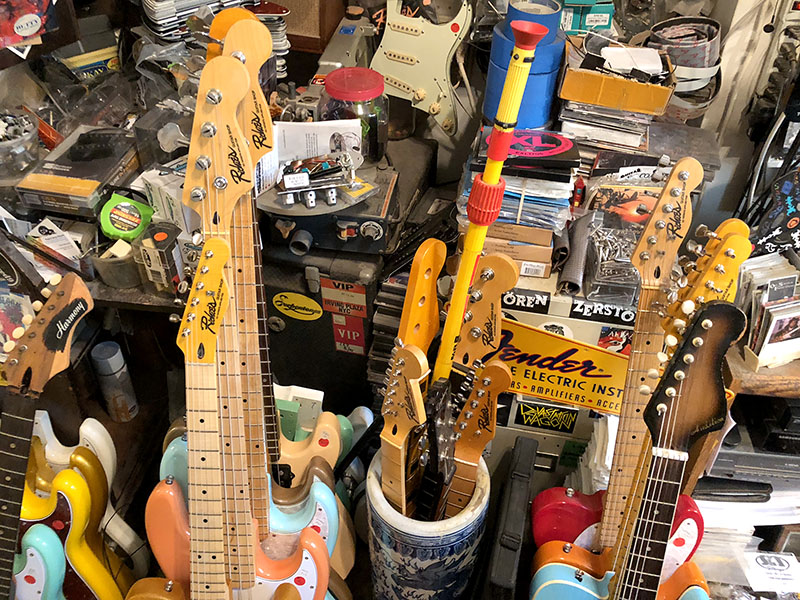
Richie sells his own brand telecasters from $400 upwards and his guitars are built to play better than probably anything else from within that price range as he has such a superb eye for recycling and reusing parts. Dismantling the guitar ready for suitcase packing and travel back home to the UK, I felt confident that on my return I would try and upgrade my less than loved MiM Telecaster.
I went to a well known internet auction site and purchased all the parts I needed – I got a licensed maple neck, rosewood fretboard and abalone inlays, stainless steel frets and Gotoh vintage tuners. Perfect. I measured the nut on my old neck and matched it to the width on this perfectly. What could go wrong – it’s only 4 bolts right ? I also installed a new bridge and pickguard and some Bare Knuckle Flat 52 Pickups and by this time I felt like I had found my calling – I was going to build Telecasters style guitars! This feeling lasted approximately as long as it took me to install a set of strings…
Most of the geometry was fine – I hadn’t needed to shim the neck or anything (Richie used Tortex pics to do this – ingenious) but the string spacing was way off. The Low E was a good distance from the edge, kind of ok, but the high E was right on the neck line. In fact, before I made some adjustments, it was almost off the fretboard completely. Naturally I panicked. I figured I had messed up so off to the search engines I went. Turns out this is a common issue, and the received wisdom is back the screws out a little, yank the neck towards you, and screw back in tight. This massively improved the position and the guitar was playable. Phew.
My favourite quote of Richies was that “Any idiot can put together a brilliant Telecaster with expensive parts, but it takes a real genius to make the same guitar for $400”. I cannot argue with this statement. My Partscaster, despite looking amazing, having the best parts I could find, and sounding pretty awesome, just lacked that certain mojo. Some guitars have it and some don’t. It isn’t magic unicorn poop or anything – but it is a result of having experience and patience and getting the best out of what is essentially a very simple design.
I did then find a nice replacement though – a hand built Gordon & Smith Classic T in stunning Seafoam green. Made in England, the quality is excellent, it sounds awesome, and the neck matches the playability of my old James Burton Tele. It has a brass nut but individual saddles so you still get the twang, but you also get good intonation. The knurled knobs have markers. The pickups are hand wound, and the whole guitar feels great. Perhaps this is the one to stop my GAS? Maybe. But this new Brent Mason Tele, well, it looks special.
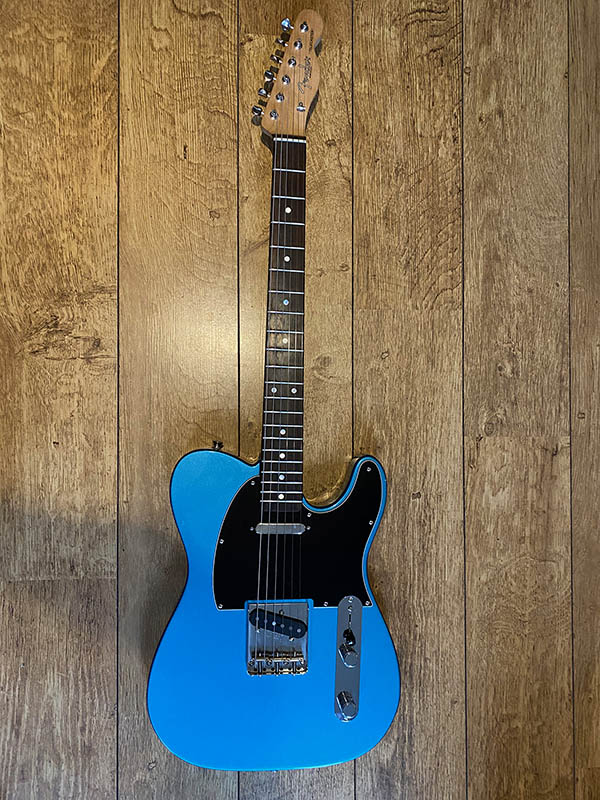
*While I remember – the good folk over at Gear Savvy recently made the Wampler Ethereal their top pick for ambient pedals – check out the article here



My two favorite Richards in the same article about my favorite subject, guitars! It’s all about the journey brother. Keep on rocking and rolling.